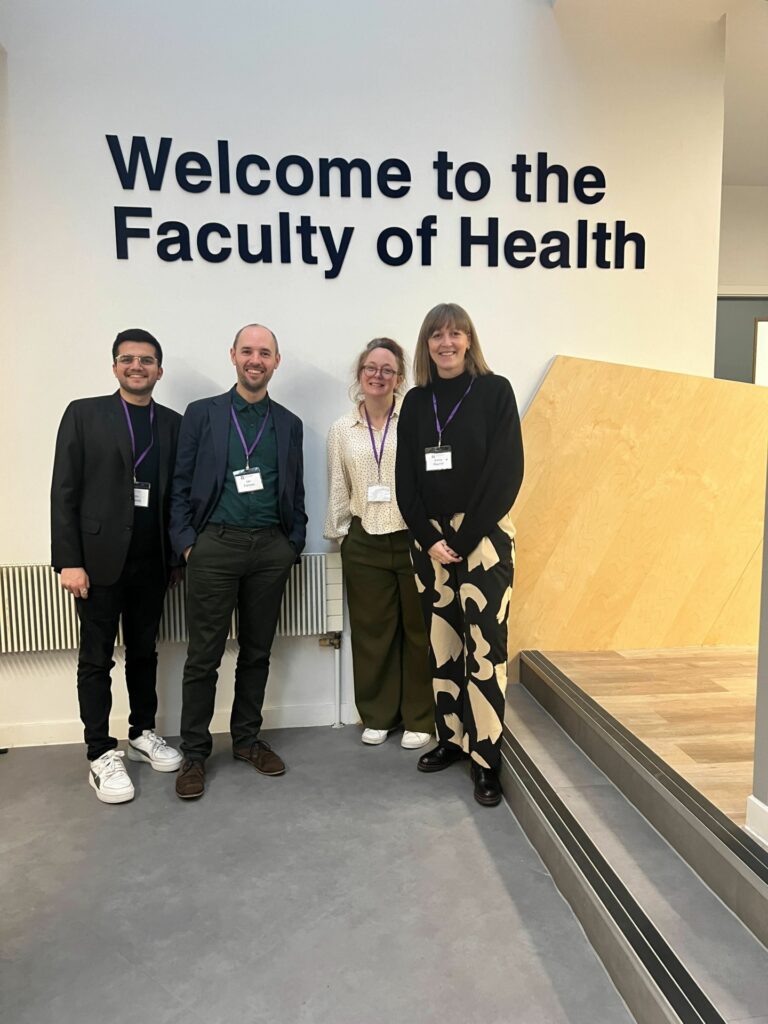Why treat people and send them back to the conditions that made them sick?

It’s 20 years since I last saw Prof Sir Michael Marmot speak. The first time left quite a mark on me and I’ve followed his work most of my career since. It’s fair to say I’m a bit of a fan.
Yesterday he delivered the most extraordinary keynote at the Behavioural Science and Public Health Network conference in Liverpool, at which colleagues from Claremont were also presenting our work on cancer prevention (scroll down for more on this).
A colleague described it perfectly afterwards: “it was a privilege”.
For those who don’t know him, Prof Marmot is arguably the world’s leading expert in social determinants of health. His core argument, with which he began his 2015 book, The Health Gap is: What good does it do to treat people and send them back to the conditions that made them sick?
Yesterday he presented the most articulate, coherent, evidenced case for why, if you under-invest in childcare, education, employment, welfare, housing and the built environment, then health and life expectancy inevitably suffer.
The overall picture he painted for the health of the UK was bleak, yet he did it with charm, wit, passion and humility – and he ended with reasons for optimism. It was an inspiring call to arms for our profession to get real about what needs to change, and where our focus should lie.
The need to head upstream
Systems thinking is a big emerging area for behavioural science and its importance was never more evident. The need to head upstream and plan interventions that address root causes of many of society’s issues, rather than spend so much energy, time and money reacting to the downstream effects.
Other speakers yesterday reinforced Prof Marmot’s call-to-arms, including Prof Matt Ashton, Director of Public Health for Liverpool, and Ashley Gould, from the Behavioural Science Unit at Public Health Wales. And much of what we heard resonated with conversations we’ve been having at Claremont over the last year or so, as we’re giving more and more consideration to upstream thinking when working with our clients.
Those of us working in behaviour change often look at problems through the lens of the COM-B model, considering capability, opportunity and motivation barriers. Over time, practitioners in our field have arguably come to pay too much attention to the ‘M’, with the emphasis on using persuasive communications to motivate individuals to change their behaviour, and too little attention to the O: how we can change the environmental context to increase people’s opportunity to make the optimum behavioural choices.
20 years ago Prof Marmot helped me realise what I wanted to do with my career. Yesterday he recharged my resolve to ensure Claremont plays its part in helping our clients shift their focus upstream. If you ever get the chance to see this great man speak, grab it.

Claremont’s work on cancer prevention
One of the best examples of upstream thinking in public health is the well-established cancer screening programme in the UK. Claremont has worked on multiple cancer screening and prevention projects over recent years, including the NHS-Galleri trial, SUMMIT study and YouScreen study, as well as projects with NHS England, Jo’s Cervical Cancer Trust, King’s College London and Imperial College London.
Yesterday my colleagues Phillipa Williams and Emily Rayner had the unenviable challenge of following Prof Marmot and presenting recent examples of our work in cancer prevention.
- Phillipa shared our work with Bowel Cancer UK, alongside our client Andy Glyde, with whom we have been developing a new campaign aimed at supporting people experiencing symptoms to go to their GP earlier.
- Emily presented our behavioural research and intervention design work for North East London Cancer Alliance, where we have been seeking to understand barriers to cancer awareness and screening among Eastern European residents.
SAVE THE DATE: We are hosting our next Behaviour Change Briefing webinar on 25 April, where we will be sharing this work and more. Sign up to Claremail below to receive your invite.
Featured photo source: BSPHN
